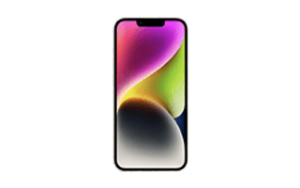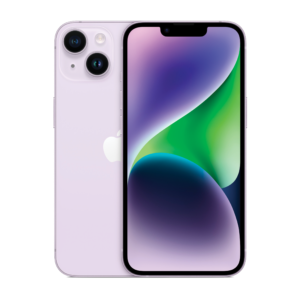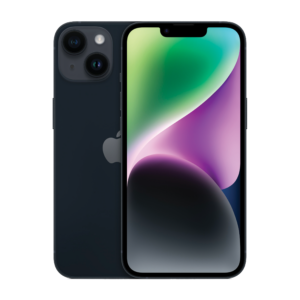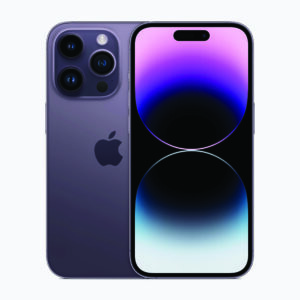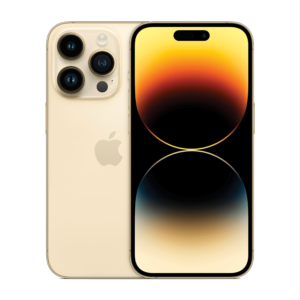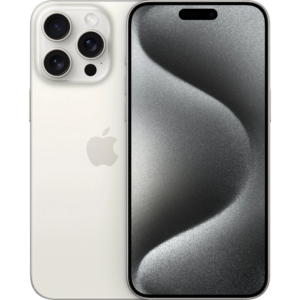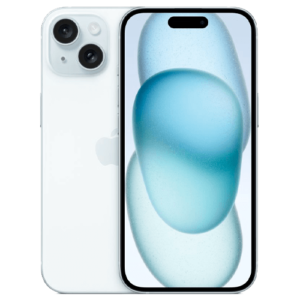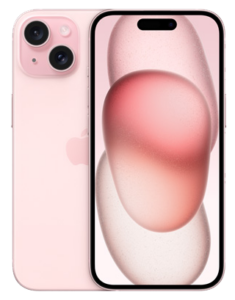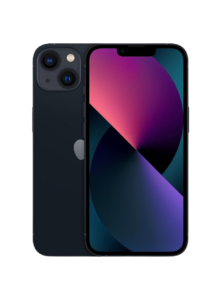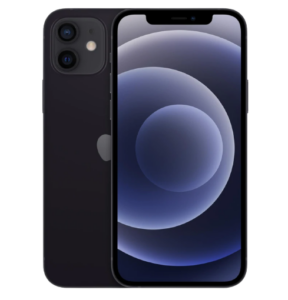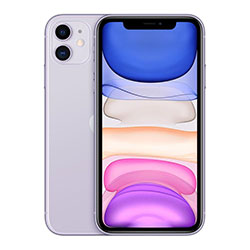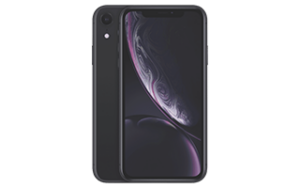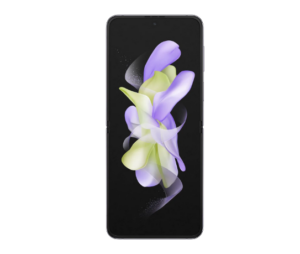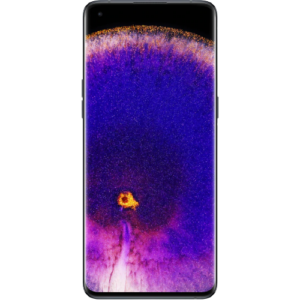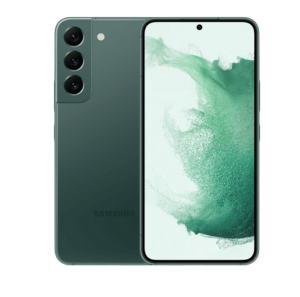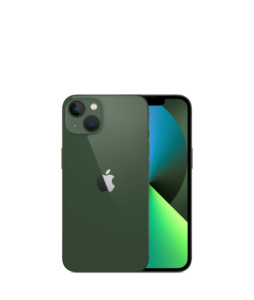A inoffensive update on last year's iPhone that could probably serve to be a little more ambitious.
Apple iPhone 14 is a solid if safe option for those willing to settle
The iPhone 14 is likable enough, but a lack of focus or ambition makes it hard to fall in love with.
Not everyone thinks about smartphones the same way, or even to the same degree. It's a bit like dating in that sense. But no matter how you slice it up with a postpaid mobile plan, it's hard to escape how expensive the iPhone 14 is in Australia.
Some relationships are more expensive than others, and if you're seriously thinking about spending all that money, you probably want this one to last. It's not enough to avoid the usual red flags. You don't just want to be able to imagine a future with a device this costly, but a good one.
Unfortunately, the iPhone 14 is all too often defined by what it isn't. The iPhone 14 Pro Max is the option for those who wan it all. The iPhone 14 Pro is the one for those who don't need that larger screen. Finally, the iPhone 14 Plus is a no-brainer for those who do but aren't attached to the other upgrades served up by the Pro models this time around.
The iPhone 14 is what's left. It's the baseline by which the relative value of everything else on the roster is measured. That status quo works out to be an iPhone 13 with a handful of tweaks.
The iPhone 14 knows how to have a nice night out, but it's nothing you haven't seen before.
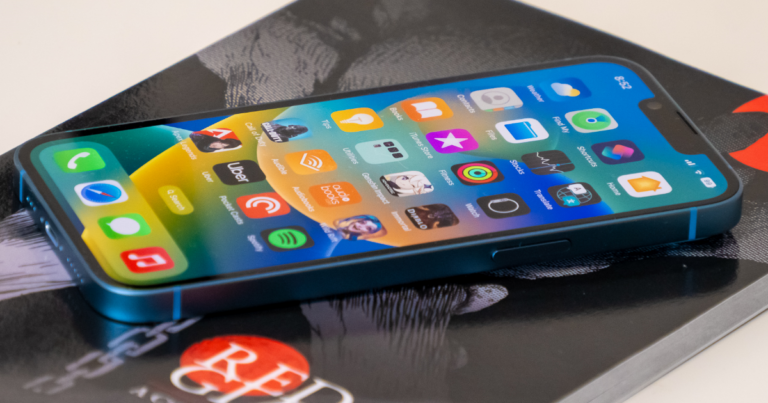
How much does iPhone 14 cost in Australia?
Every handset in the 2022 lineup of iPhones is a little more expensive than last year's equivalent with the exception of the iPhone 14 Plus, which has no counterpart in the 2021 lineup.
Those looking at the cheapest version of the iPhone 14 available are looking at $1,399 for the standard 128GB model. If you want a few more gigabytes or storage, you're looking at spending either $1,519 for the 256GB model or $1,869 for the full 512GB of storage.
Check out the table below for a full breakdown of Apple iPhone 14 and iPhone 14 pricing in Australia.
Apple iPhone 14 - plans
If you gotta get that new iPhone but can't afford to the cost of buying one outright, a postpaid mobile plan might be your best bet.
At the time of writing, Optus, Telstra and Vodafone are offering a selection of plans for the new iPhone 14 on a plan. Check out the widgets below for a round-up of most popular options for each version of the new handset with at least 20GB of monthly data.
iPhone 14 128GB plans
iPhone 14 256GB plans
iPhone 14 512GB plans
Apple iPhone 14 - Design and features
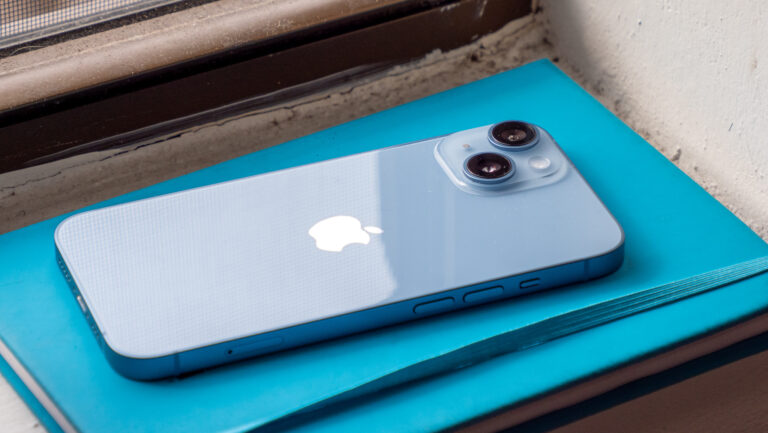
Even if the argument for why the premium price commanded by Apple's new iPhone remains intact in a general sort of sense, the case for the iPhone 14 specifically is painfully forced.
What's on offer here really does feel more like an iPhone 13S than a more justified follow-up. That's not necessarily as damning as it might sound at first blush, but it doesn't exactly make the premium price any easier to stomach.
Like the iPhone 13, the iPhone 14 is built around a 6.1-inch Super XDR Retina OLED display. This isn't particularly different from the one found in the iPhone 13 or even the iPhone 12, though it's still a gorgeous enough canvas for everything from social media to web browsing to photo editing to gaming.
The iPhone 14 also comes coated in Apple's Ceramic Shield display protection and IP68 rated for water and dust resistance, which is close to as good as things get when it comes to smartphone durability specs. It's not better or new, nor is worse or different. In other words, it's another iPhone.
That said, The greatest hits of last year's iPhone 13 aren't the only thing getting a re-run here. Many of the distinctions that separated last year's standard and Pro-grade models last time around also make a return.
This year's iPhone 14 doesn't have a third telephoto lens on the back of it, nor does the front-facing half of the device boast a 120Hz refresh rate. The other big elephant in the room worth acknowledging is that buying the iPhone 14 doesn't get you access to Apple's new Dynamic Island.
For now, this next-generation take on Apple's iconic-yet-infuriating notch can only be found in the iPhone 14 Pro and iPhone 14 Pro Max. Those who settle for the iPhone are a the usual wedge-shaped display cutout that is physically (and functionality) identical to the one found on the iPhone 13.
Held up against the other Apple-branded alternatives, the biggest asset that the iPhone 14 has on its side are a cheaper price-tag and a smaller size. It's not quite a 5.8-inch small phone, nor is it as affordable as something like the Samsung Galaxy A73 or the new iPhone SE.
Nevertheless, if you're keen on the idea of spending the least amount you possible can or getting a new iPhone that's a little less gargantuan than the rest, this will fit the bill. It's obvious, but it's the truth and far more likely to sway your choice in iPhone than new features like Satellite Connectivity and Crash Detection.
The above aren't nothing, but it's easier to get excited about the idea of what they represent than the reality.
Even if Apple's adoption of these features raises a bar that the rest of the smartphone market strives to meet, the tangible utility afforded by them exists on the margins rather than in the many moments are going to make up the vast majority of your time using this device. Both are nice to have in the hope that you'll never have to use them, which doesn't do much for the day to day.
Of course, if you are looking for reasons to choose this over anything that runs Android, the answer that the iPhone 14 presents isn't all that different to the one offered in previous years.
As with earlier incarnations, it's a one-two punch. Part one: the iPhone 14 arrives powered by the latest version of iOS. Part two: the iPhone 14 has a dual lens camera that's arguably more capable than most of the triple and quad-lens options out there.
The back of the device boasts a familiar (though not quite identical) dual 12MP setup to the one on last year's iPhone 13. Courtesy of a new Photonic image processing engine, the iPhone 14 (and its siblings) will all offer significantly enhanced low-light performance. The 12MP camera on the front of the new iPhone 14 benefits the most from this algorithmic secret sauce, but the rest of the optics in the equation aren't far behind.
In any case, check out the gallery below for some snapshots that give you a sense of what the rear camera on the iPhone 14 can do.


























Alongside the benefits that Photonic brings with to the front-facing camera on the iPhone 14, selfie stans are also likely to appreciate the inclusion of autofocus and a larger aperture this time around.
These are a fairly obvious improvements, but the bump in consistency of quality that they provide helps make the single-lens snapper wedged in the iPhone 14's notch a little more in-line with some of the setups found in Android devices like the OPPO Find X5.
These technical tweaks leave photography feeling like the area where the iPhone 14 offers the most tangible improvements over last year's iPhone 13. Even if the gains involved are more steadfast than significant, it all serves to make the idea of an iPhone camera that doesn't have to be pro to be powerful more convincing than ever before.
How does this compare to the latest iPhone?
Apple iPhone 14 - Performance and battery life
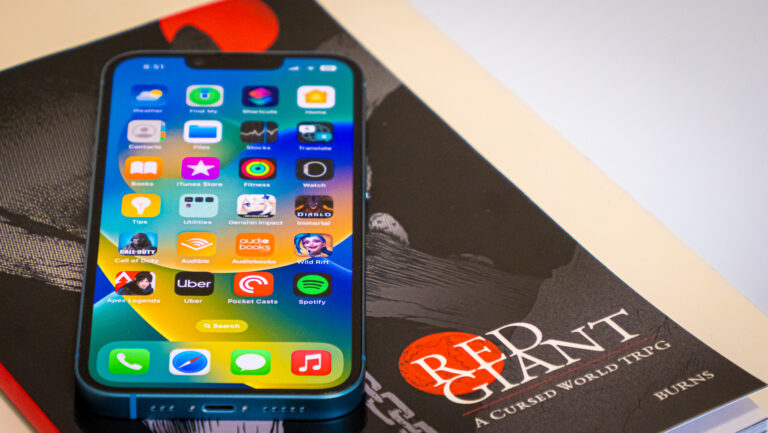
Apple typically introduces its next-generation processors with each new iPhone, but the iPhone 14 misses out this time around.
While the iPhone 14 Pro and iPhone 14 Pro Max come armed with Apple's brand new A16 Bionic processor, the standard iPhone 14 is kitted out with the same A15 Bionic system-on-chip found in last year's iPhone 13.
Before this encore act eats into your enthusiasm too much, it's worth noting that the A15 Bionic is still a standout piece of silicon. When it comes to mobile performance, it outpaces every Snapdragon out there.
What's more, the A15 Bionic inside the iPhone 14 comes augmented by an updated internal design. According to Apple, these tuning-oriented changes will allow the same hardware to deliver better thermal efficiency compared to what the iPhone 13 could offer.
In practice, the iPhone 14 lived up to these expectations and then some. The handset was snappy and silky to use from the moment I first booted it up.
Apps loaded fast, multitasking felt weightless, and the A15 Bionic handled every mobile game I threw at it without breaking a sweat.
Apple doesn't exactly sell the iPhone as a gaming machine, but the high-end performance offered by the company's house-brand silicon makes the case for it as one extremely easy. From Genshin Impact to Diablo Immortal to Apex Legends Mobile, the iPhone 14 delivered seamlessly-smooth frame rates and snappy-feeling gameplay.
As for battery life, the iPhone 14 proved to be something of a standout. Most of the time, I'd comfortably make it to the end of a long day (connected via 4G) with around 40% battery life remaining. I couldn't quite manage to go two full days on a single charge, but between six to six and a half hours of screen time is nothing to scoff at.
Burned down via video streaming on YouTube, the Apple iPhone 14 lasted 18 hours and 30 minutes. That's a better result than what a fully charged Galaxy Z Flip 4 or OPPO Find X5 can manage, though it lags behind mid-rangers like the Google Pixel 6a.
In addition to 20-watt wired fast charging via Lightning cable, the iPhone 14 also supports wireless charging via MagSafe and Qi.
iPhone 14 vs iPhone 13
The fact the iPhone 14 is very similar to the iPhone 13 is hard to escape.
Physically, the iPhone 14 is slightly thicker than its predecessor. Beyond that and the addition of new colour variants like purple, the biggest differences between the two devices are internal.
The most tangible of these is the camera. The iPhone 14 has a more powerful front-facing camera with auto-focus, a larger sensor in the main camera, support for 4K Cinematic mode video capture at 30 frames-per-second, Action Mode video stabilisation, and superior low-light photography via Apple's new Photonic image processing.
Elsewhere, the iPhone 14 has more RAM, satellite connectivity (although this feature currently isn't available in Australia), a slightly larger battery, a more efficient 5G modem and new high-G accelerometer that's used for Apple's new crash detection feature.
The sum total of these inclusions set the iPhone 14 up nicely, though they don't make for an experience that's all that different or better than the iPhone 13 when it comes to everyday use.

Hands-on with iPhone 14 and iPhone 14 Plus
Is the Apple iPhone 14 worth buying?
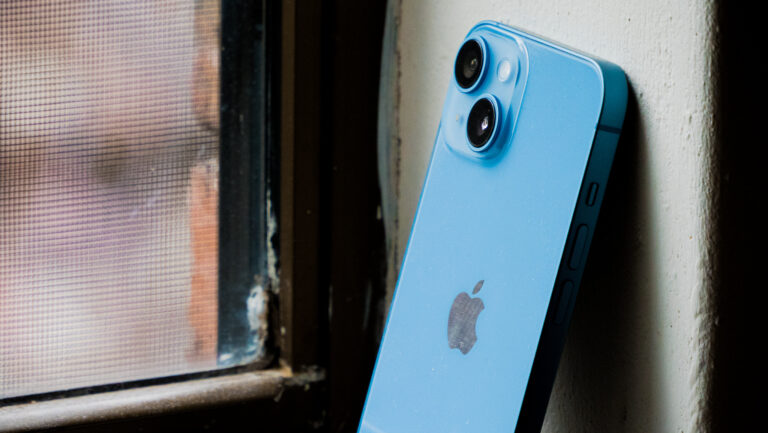
Despite the absence of a Mini-sized model that more explicitly leans into the appeal of less being more, the iPhone 14 can't help but feel like the most vanilla choice on the menu. It's not the best at anything, even if it is more than good enough at everything to shrug off most of the Android-based competition.
The iPhone 14 seemingly exists as a mid-step for those who prefer the small form factor, can't afford to go Pro, and can't stomach the idea of buying last year's phone. In other words, it's the iPhone that exists to up-sell you. You're as likely to be unhappy with what's on offer here as you are to be left satisfied.
It's one thing for this year's new iPhone 14 to come with last year's A15 Bionic processor. It'd be another for it to be cheaper rather than more expensive. The iPhone 14 is everything it needs to be, but not much else.
For as superhuman as the performance, battery life, and photography can sometimes feel, the iPhone 14 feels like settling.
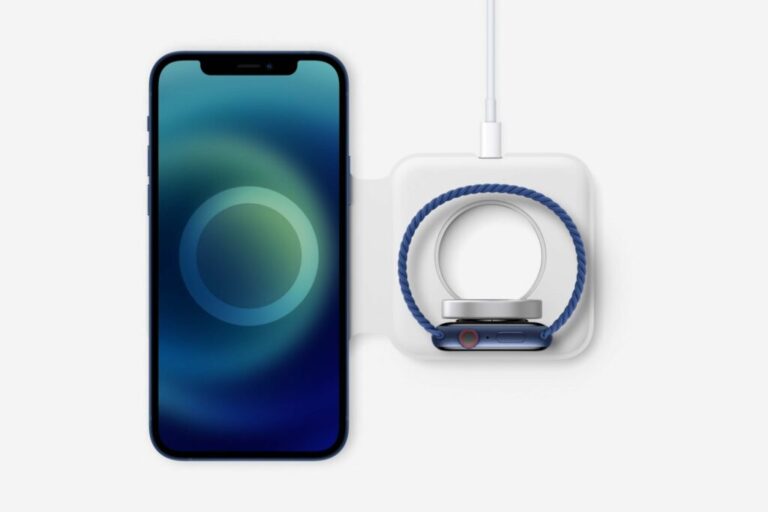
Need a charger to go with that iPhone?
Change up your charging setup with our guide to the best (and fastest) iPhone chargers you can find in Australia.
Apple iPhone 14 FAQ
In Australia and a number of other regions, the iPhone 14 ships with the same SIM card tray that you'll find on earlier iPhones and Android-based alternatives.
However, if you're in the United States, the new iPhone 14 is the first to ship with exclusively eSIM connectivity.
The iPhone 14 has 5G as standard, though it incorporates a new modem that promises better power efficiency that the one found in last year's iPhone 13.
The iPhone 14 is a smidge thicker than the iPhone 13, but it's also 1 gram lighter. This doesn't work out to be a huge difference in a physical sense, though it does mean that iPhone 13 cases won't work with the new handset.
Related Articles




